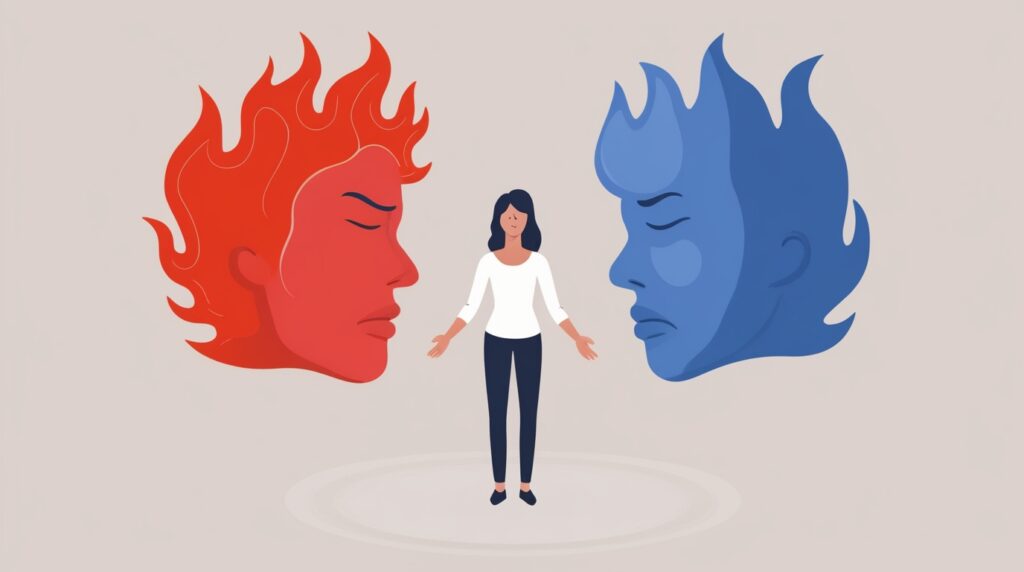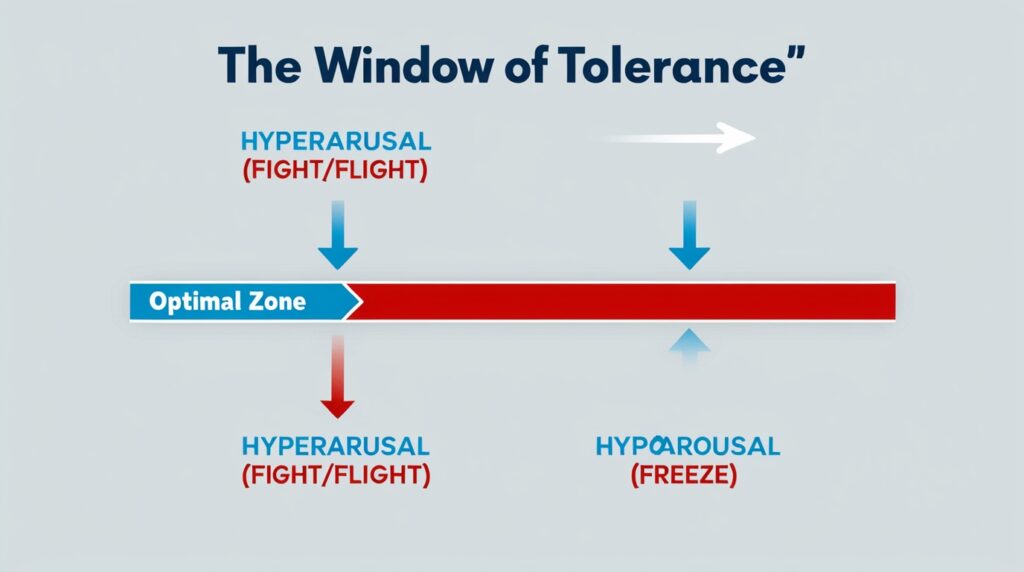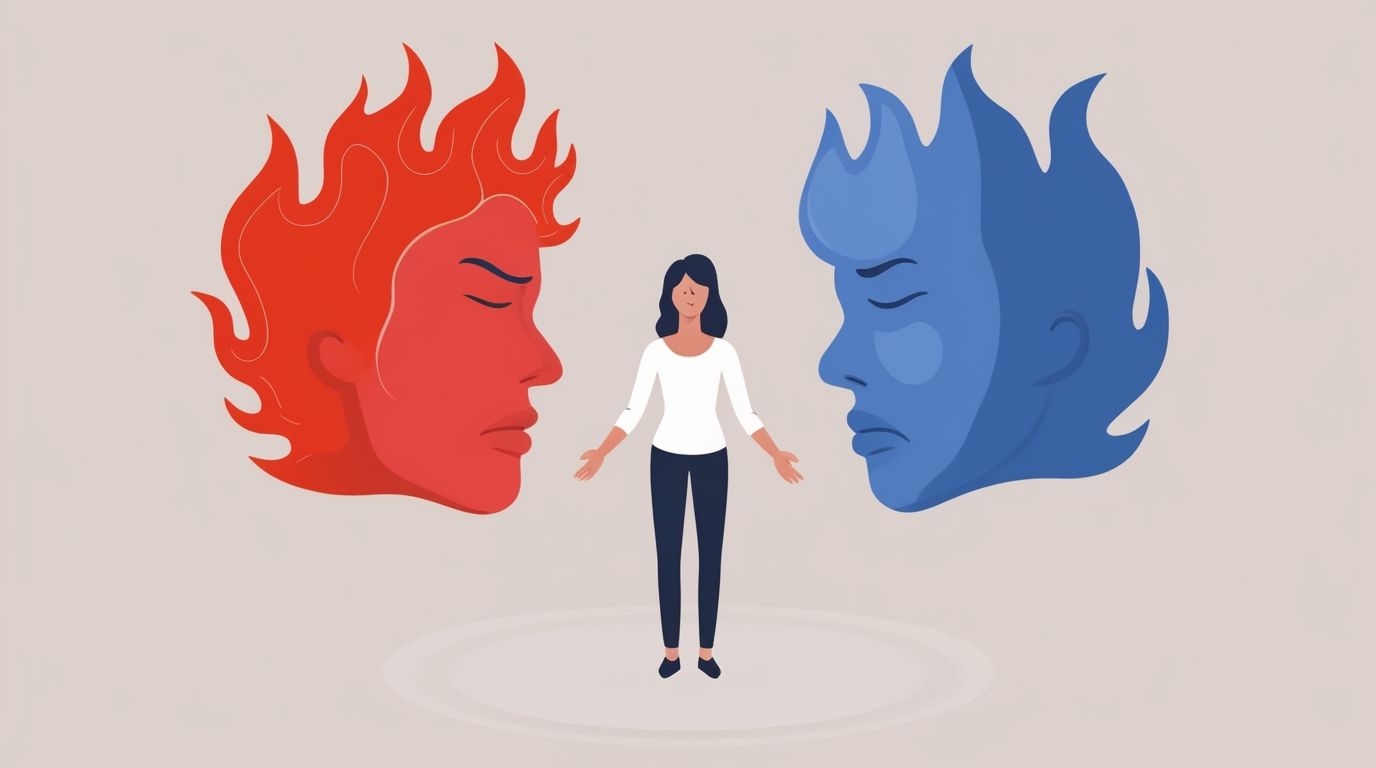You Might Be ‘Outside Of Your Window Of Tolerance’ Without Even Knowing — And Others Can Tell
You Might Be ‘Outside Of Your Window Of Tolerance’ Without Even Knowing — And Others Can Tell
Introduction
Ever found yourself snapping at someone for no reason or shutting down completely during stress? You might not be “losing it” — you could simply be outside your window of tolerance. This concept helps explain why we react the way we do when our nervous system feels overwhelmed. And here’s the catch: while you might not realize it, others often can tell.
What Is the Window of Tolerance?
The Window of Tolerance was coined by Dr. Dan Siegel, a psychiatrist and neuroscientist. It represents the range of emotional arousal we can handle while still functioning effectively. Inside this window, we can think clearly, communicate calmly, and manage emotions. Step outside it — and we either spiral into chaos or shut down completely.
In short: it’s the sweet spot where your nervous system feels safe enough to function at its best.
The Science Behind It
Our nervous system controls how we respond to stress. The sympathetic nervous system prepares us for fight or flight, while the parasympathetic nervous system helps us rest and digest. When stress hits, these systems either ramp up or shut down.
If your body senses threat (real or imagined), you might go into:
- Fight or flight: feeling anxious, irritated, or hyper-alert.
- Freeze: feeling numb, spaced out, or disconnected.
Both are signs you’re outside your window.

Signs You’re Within Your Window
When you’re inside your window of tolerance, life feels manageable. You can:
- Think rationally under stress.
- Express emotions without being overwhelmed.
- Stay engaged and connected in conversations.
In this state, you’re flexible, grounded, and emotionally available — your mind and body are in sync.
Signs You’re Outside Your Window
When you step out of your window, things get rough.
Over-arousal (Hyperarousal)
You might feel:
- Panic or racing thoughts
- Restlessness or irritability
- Muscle tension or short temper
Under-arousal (Hypoarousal)
You might experience:
- Emotional numbness
- Fatigue or disconnection
- Difficulty focusing or caring
People around you may notice before you do — your body language, tone, or energy changes noticeably.
How Others Can Tell You’re Outside It
Even when you try to hide it, your body tells the truth.
Others may see:
- Your tone gets sharper or flat.
- You seem distracted, detached, or fidgety.
- Your eye contact, posture, or facial expressions shift.
Humans are wired for emotional resonance — our nervous systems “read” each other. That’s why people sense when something’s off with you, even if you smile and say, “I’m fine.”
Common Triggers That Push You Out
It doesn’t take a major trauma to shrink your window. Everyday triggers can do it:
- Lack of sleep or rest
- Information overload
- Conflict or criticism
- Overwork or pressure
- Unresolved emotional wounds
Your nervous system remembers old stress patterns — so even minor issues can cause big reactions.
The Impact of Being Outside Your Window
Staying outside your window for too long has consequences:
- Chronic anxiety or burnout
- Strained relationships
- Impulsive decisions
- Poor concentration and creativity
When your system never resets, it’s like a car engine running on overdrive — eventually, it burns out.
How to Return to Your Window
The good news? You can come back — and even expand your window.
1. Grounding Techniques
Focus on your senses:
- Name five things you see, four you feel, three you hear.
- Feel your feet on the ground.
2. Mindful Breathing
Slow, deep breaths signal safety to your brain. Try inhaling for 4 seconds, holding for 2, exhaling for 6.
3. Physical Movement
Gentle stretching, walking, or dancing helps release trapped stress energy.
4. Soothing Environment
Lower lights, soft music, or nature sounds can calm the system.
Building Emotional Resilience

Think of your window like a muscle — the more you work it, the stronger it gets.
You can expand it through:
- Regular self-care and rest
- Therapy or coaching
- Journaling or meditation
- Supportive relationships
Resilience doesn’t mean avoiding stress — it means handling more of it without losing yourself.
The Role of Self-Compassion
When you’re outside your window, self-criticism only tightens it.
Instead, be kind to yourself.
Say, “I’m overwhelmed, and that’s okay.” This small act of compassion tells your body it’s safe again.
Helping Others Regulate
Sometimes, the best way to help someone back into their window is through co-regulation — using calm presence and empathy.
- Listen without judgment.
- Keep your voice gentle.
- Offer grounding (“Take a breath with me”).
Emotional safety spreads — your calm can become their calm.
Myths About Emotional Regulation
Let’s clear up a few misconceptions:
- Myth 1: “Staying calm means you’re weak.”
→ Reality: It means your nervous system is balanced. - Myth 2: “Emotions should be controlled, not felt.”
→ Reality: Emotions are data, not enemies. Feeling them is part of regulation.
Real-Life Examples
At Work
A manager yells during meetings — classic hyperarousal. Another employee avoids conflict completely — hypoarousal. Both are outside their window.
Parenting
A parent losing patience with a crying toddler may need to breathe and self-soothe first before responding.
Social Settings
Someone anxious in crowds may freeze or withdraw — their nervous system signals “too much.”
Conclusion
Your window of tolerance is your emotional comfort zone — where you can handle life’s ups and downs gracefully. Step outside it, and everything feels like too much. But the more you understand it, the more control you gain over how you react, relate, and recover.
Learning to stay within (or return to) your window isn’t just self-care — it’s emotional mastery.
FAQs
1. Can my window of tolerance change over time?
Yes! With practice, therapy, and mindfulness, you can expand your capacity to handle stress.
2. Is being outside my window always bad?
Not necessarily — short bursts can help you grow, as long as you return to balance.
3. Can someone else help regulate my emotions?
Absolutely. Co-regulation through safe, calm interaction is powerful.
4. Why do I feel tired after emotional stress?
Because your nervous system has been working overtime — recovery takes energy.
5. What’s the fastest way to return to my window?
Grounding and deep breathing — they signal your body that you’re safe right now.







